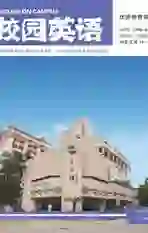Types of the Culture Other from Translation Perspective
2016-07-28胡水周
胡水周
【Abstract】The Other is actually indispensable to the Self in terms of both existence and development. Translation, as a significant tool that connects the Self and the Other, is a process which has at least the potential for more interaction and tolerance between cultures. This paper makes an attempt at summarizing the types of the Other in terms of the circumstance and offering related appropriate translation strategies under different circumstances.
【Key words】the Culture Other; type; translation strategy; circumstance
German philosopher Hegeldepicts the interaction between the master and slave as a life-and-death confrontation in Science of Mental Phenomenon. The slave remains the “other” to the master, thanks to which the authority of the self is thus established. The term “Culture Other” forms as the dimension of the Other is expanded from that of an individual to that under a broad cultural context. Normally, the (culture) Other refers to a culture other than itself singled out as different. Nowadays, globalization requires the Self to be more open to the Other, which is also true with translation. But how to act justifiably to the Other depends on what types of Others are being dealt with.
Shifts and changes in translation technique were intimately linked with the way in which different cultures came to terms with the phenomenon of translation at different times, with the challenge posed by the existence of the Other and the need to select from a number of possible strategies for dealing with the Other (Bassnett & Lefevere 12). This paper makes an attempt at summarizing the types of the Other in terms of circumstances and offering related appropriate translation strategies under different circumstances.
The first type of the Other exists when the exchange of encountering cultures is still in the primary stage in which cultures still remain alien to each other, producing an unfamiliar circumstance. The process of translating Western works into Chinese was initiated near the end of the 16th century. About 57% of these translations are related to Christianity with 30% science and 13% humanities (Tsien 307). Previously, the Chinese culture was taken by the Westerners as the Other which granted them the right to choose what to bring to this Other; however, gradually for political and economic interests, the Self (Chinese) began to play a major role. Take YAN Fus translation of Evolution and Ethics for example. It is reasonable to adopt domesticating, target-oriented and meaning-based strategy to meet the urgent need for the Self to know about the otherwise inaccessible foreign ideas even at the risk of distorting some original ideas.
The second type of the Other exists when two cultures have obtained proper amount of knowledge about each other. Under this circumstance, the Self is bound to require a synthetic understanding of the Other, which leads to increasing translation in various fields. Great confusion arose in the choice of Chinese equivalents for the Western terms as translations strategies adopted in the primary stage gradually lost their popularity and practical superiority. LU Xun adopted the literal method in the classic style, keeping the foreignness while still maintaining them in Chinese classic style. The change is to combine the domesticating, target-oriented and meaning-based strategy with the foreignizing, source-oriented and more language-based one.
The last type of the Other appears when one culture interacts with another existing long ago. For example, the Bible translators have to contend with the ultimate power of God.... Therefore, in the early period, literal translation was strongly advocated so that Gods holy words could be rendered into the target language ideally unchanged (Bassnett & Lefevere 19). It can be certain that many translations are done beyond pure religious dissemination but for cultural utility, enrichment and inheritance. “Do not let yourself, as translator, be captivated by the glories of an ancient civilization; borrow from them, but borrow boldly, with no intention of returning what you have borrowed, let alone being seduced by their beauties; lead the great originals captive into an ever stronger and more powerful target culture context.” (Robinson 61) The domesticating, target-oriented and meaning-based strategy enables the past Culture Other to exist and continue in a state close to the original while the foreignizing, source-oriented and language-based one enables it to spread and evolve in dynamic manners.
In conclusion, as a significant tool that connects the Self and the Other, translation is a process which has at least the potential for more interaction and tolerance between cultures, less ethnocentric views and more open scholarship.
References:
[1]Bassnett,Susan & Lefevere,André.Constructing Cultures.Shanghai:Shanghai Foreign Language Education Press,2001.
[2]Robinson,Douglas.Translation and Empire:Postcolonial Theories Explained.Beijing:Foreign Language Teaching and Research Press,2007.
[3]Tsien,Tsuen-hsuin.Western Impact on China Through Translation.The Far Eastern Quarterly,Vol.13,No.3(May,1954),pp.305-327.
